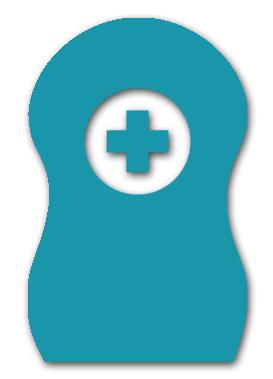
6 Month Visit
Six months is one of our favorite ages! Babies at this age are really starting to interact. They’re learning to sit more and enjoy playing with their parents or siblings while sitting up. Feeding food becomes a bigger deal, and if you have a family pet, you have probably learned that they love sitting under the high chair!
What most babies do by this age:
Social/Emotional Milestones
- Knows familiar people
- Likes to look at self in a mirror
- Laughs
Language/Communication Milestones
- Takes turns making sounds with you
- Blows “raspberries” (sticks tongue out and blows)
- Makes squealing noises
Cognitive Milestones (learning, thinking, problem-solving)
- Puts things in her mouth to explore them
- Reaches to grab a toy he wants
- Closes lips to show she doesn’t want more food
Movement/Physical Development Milestones
- Rolls from tummy to back
- Pushes up with straight arms when on tummy
- Leans on hands to support himself when sitting
Source: CDC – Learn the Signs, Act Early
Next, work on…
More Mobility
Encourage your baby to be active and mobile. Allow her to reach for objects herself instead of getting them for her. As she goes through the next three months, she will start working on pulling to stand.
Continue thinking about baby-proofing your house. Create an environment that is safe for exploration and secure anything that an early mover might be able to get into. Ensure that anything she might use to pull up is sturdy and secure.
Using hands
Six-month-olds typically have a raking grasp and use their whole fist to grab items. By around eight months, you may find that this changes to a scissor grip and, eventually, a pincer grasp. When that happens, babies get better at picking up small items.
Oral Health
Early dental care, with the first tooth’s eruption, means using a soft toothbrush or cloth to clean your baby’s teeth with water.
Hold your baby for bottle-feeding. Do not prop the bottle or let your baby graze (drinking from a bottle at will during the day). Putting your baby to bed with a bottle containing juice, milk, or other sugary liquids will cause tooth decay.

Safety
Your baby should remain rear-facing in the car seat until he is two years old and be placed in the center of the back seat if possible. Changing from the infant carrier-type car seat to a convertible seat in several months would be best. Babies typically outgrow the infant carrier based on length. The maximum size for your particular carrier is printed on its side label.
You may use infant sunscreen now. Please keep wearing clothing and hats to help avoid overexposure to the sun. Insect repellents containing DEET may also be used at this age, but you may want to spray it on your hand and rub it on the skin or use repellent wipes, but wash this off after a few hours.

Feeding
Breastmilk or formula still provides most of the calories babies need at this age. The amount of milk that your baby drinks will likely stay the same over the next few months, but food intake will increase.
At six months, babies start developing an interest in holding food and feeding themselves. They will do better with foods that can be held in a fist but are soft, like teething biscuits or spears of banana or avocado. As they develop a pincer grip, you can introduce smaller items like puffs or small pieces of soft vegetables or fruits.
Responding appropriately to your baby’s verbal and nonverbal cues during feedings lets her know that you understand her needs so that you can provide the appropriate amount of food at each feeding. Remember, you are responsible for providing a variety of nutritious foods, but she is responsible for deciding how much to eat. At this age, babies typically eat two or three times a day.
Starting some of the more allergenic foods earlier rather than later is recommended. Introducing peanut butter in small amounts regularly at this age has been shown to reduce the development of peanut allergy.
Avoid honey until the first birthday because of its connection with an infection that can affect young babies.
Sleep
Babies should sleep for longer stretches at night (at least 6 to 8 hours) by this age. Placing your baby in the crib when he is drowsy but not asleep will help him learn to fall asleep independently. Then, when he awakens at night, he can go back to sleep without your help.
Remember always to put your baby down to sleep on his back even though he may now roll over on his own.
If you have bumper pads in the crib, remove them when your baby begins to stand so they cannot be used as steps.
Immunizations
Today, your child will receive three immunizations: Vaxelis, Vaxneuvanse, and oral Rotavirus.
- Vaxelis is a combination vaccine containing DTaP, IPV, HIB, and Hepatitis B. This vaccine protects against diphtheria (a severe throat infection), tetanus (lock-jaw), pertussis (whooping cough), polio (paralysis), HIB (a bacteria that causes meningitis and severe respiratory infections), and hepatitis B (a liver infection).
- Vaxneuvanse is a vaccine against Pneumococcus, a bacteria that causes ear infections, meningitis, sepsis (blood infections), and pneumonia.
Depending on the time of year, it may also be time to start flu vaccines.
